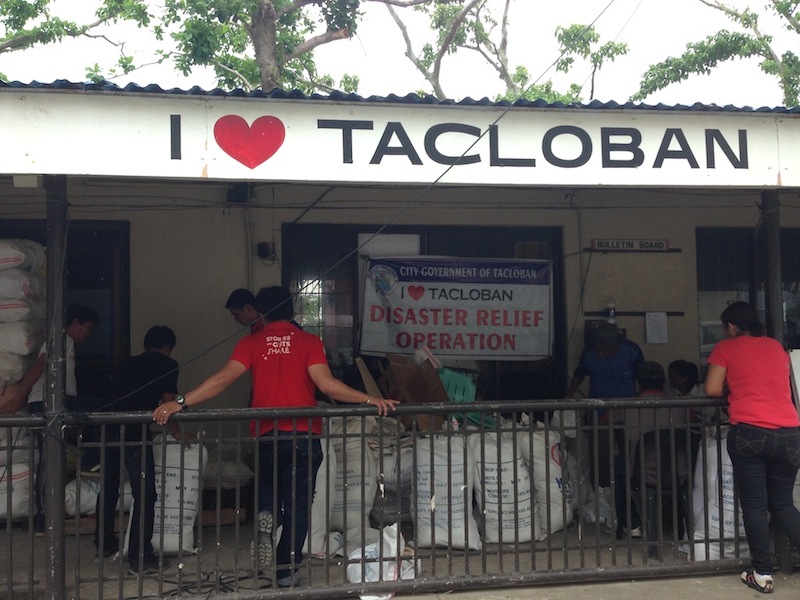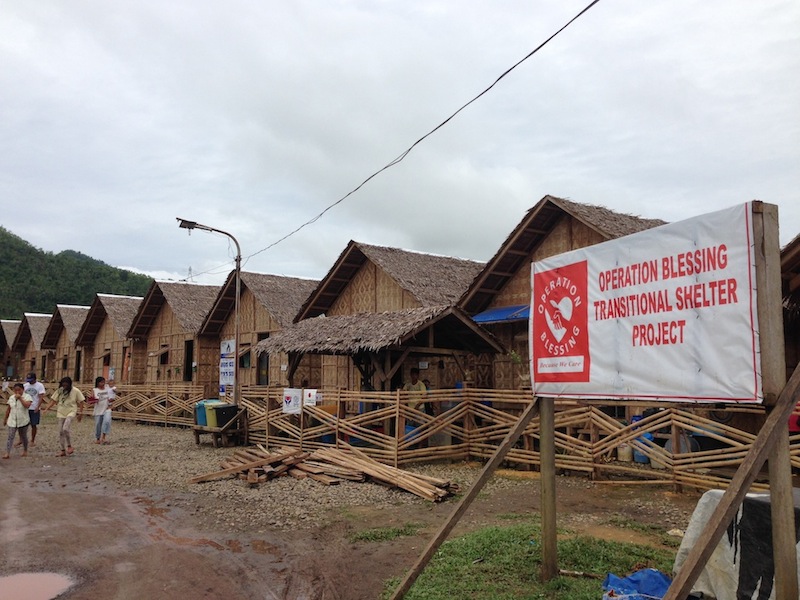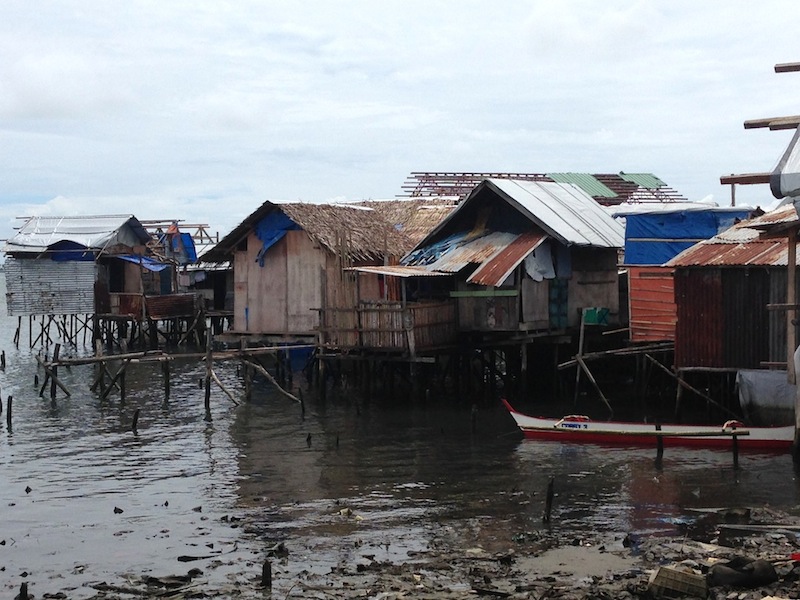Fourth of a series
By Shaira Panela
TACLOBAN CITY — Today, November 8, dawned as a day of remembrance and mourning in central Philippines two years after the powerful typhoon to hit land killed more than 6,300 people, displacing more than a million others. Leyte was at the ground zero of the disaster at that time.
Looking around the towns of Palo, Tanauan in Leyte and in Tacloban City, one could still literally see the massive destruction of Typhoon Haiyan (Yolanda): some houses and buildings are left abandoned, with dilapidated roofs and broken down walls, shattered glass windows of establishments, and resettlement areas yet to be occupied. But the resiliency of the people can also be seen as they rebuild their lives with the help of various United Nations agencies, the local and national government and the non-government organizations.
Cornelia Bechacino, 51, of Sitio Alimasag, Brgy. 88, Tacloban City, dreams of a new house away from the sea that almost killed her and her family two years ago. She said she lost her family’s livelihood when they moved into the transitional shelters in the mountainous area of Brgy. Sto. Nino.
She used to own a sari-sari store while her husband used to fish. After moving into the transitional shelter together with 38 other families, even if she tried to put up a store inside her house, she failed to replenish her merchandise. Her husband has to still go to Sitio Alimasag where their makeshift house used to stand near the shore just to go fishing.
“‘Yung iba sa amin dito, ang mga asawa nila bumabalik sa dagat (para mangisda) at umuuwi lang dito minsan dalawang beses sa isang linggo. Ang iba naman ay nagtrabaho sa mga construction, tapos ang iba naman nandito lang (Some of the husbands of the residents here still go back to the sea and fish. They go home two times a week. Some of us now work in the construction projects while the rest have no jobs and just stay here),” Bechacino said.
The transitional shelters are made from light materials and have no established electric and water supply. They charge their phones and lamps using solar panels given to them by a non-government organization, and wait for the water ration thrice a week.
She also said that they were hesitant to move to transitional shelters at first because they feared that they will lose their livelihood.
“Hindi pa kami nasasanay na lumipat kasi nandoon pa (sa Alimasag) ang hanapbuhay ng mga asawa namin (We’re not used to transferring here as our husbands’ livelihood are still in Sitio Alimasag),” she said.
They have only been in the transitional shelters for two months. But Bechacino remains hopeful as they were promised to be moved to the permanent housing sites in due time.
Like Bechacino, George Marces, 36, used to fish and dry fishes (daing) for a living back in Brgy. Bislig, Tanauan. Marces now resides at Brgy. San Roque together with his two children. His wife went to Metro Manila to serve as a caretaker of a house.
“Sa ngayon, wala (akong trabaho). Wala naman kasing ibinibigay na livelihood dito. Paraket-raket na lang muna para makatawid sa pang-araw-araw (Right now, I have no work. They don’t give us livelihood. But from time to time, I take odd jobs to get through each day),” Marces said.
On some days, he leads the construction of permanent housing sites. He still goes to Brgy. Bislig from time to time to make dried fish.
Marces recalled that during the onset of Typhoon Haiyan, there were no evacuation areas near him but they were instructed to move to a higher place. While his house remains standing along the coastline of Brgy. Bislig even after the typhoon, he, together with no less than 100 families moved to Gawad Kalinga relocation site as their former homes were declared as part of the “No-build zone.”
Fisherman Juanito Padol, on the other hand, lamented that the typhoon destroyed his fishing boat, and is now doing seasonal jobs such as that in a construction sites and collecting scrap metals to sustain his family.
But Padol said the hardship after the typhoon did not stop him from looking for job or means to upgrade his skills when he joined the Old Kawayan Fisherfolks Association’s training assistance and livelihood program on mariculture growing high-value fish and mud crabs.
“My family’s history is strongly tied with the sea. When I lost my boat, I nearly lost hope because that is how I can catch fish and feed my family. I am glad for a chance to restart, not so many are as lucky,” Padol said.
Every three months, the fishermen’s association earns about 120,000 pesos from selling their harvested fish and crabs in the local market, of which most became the revolving fund to buy fingerlings and other inputs required to sustain the new livelihood. The group is raising about 5,000 fingerlings of local milkfish and grouper, which can be sold at P5,000 a kilo.
As of June 2015, the Philippine government has released Php88.96 billion for relief and rehabilitation post-Haiyan. These funds came from the 2012 and 2013 Calamity Fund, 2013 regular budget of agencies, and 2013 unprogrammed funds. P22.739 billion of which was allocated for the National Housing Authority as assistance to families in no-build zones, and for construction of emergency shelters. (See link here: http://www.gov.ph/2015/07/27/rehabilitation-of-yolanda-affected-areas-remains-an-administration-priority/)
In Eastern Visayas, the region which suffered the worst brunt of the cyclone, the government was only able to meet 2.5 percent of the targeted permanent housing — 542 out of the supposed 21,012. The province of Leyte, including Tacloban City is part of this region.
For one, Tacloban City Housing Officer Ted Jopson said that their local government unit (LGU) still needs help from the national government in completing the water pipeline for the permanent housing areas.
Yet, the Commission on Audit (COA) report released on October 14 said that the city has not used Php26.36 million as of 2014 from the trust fund allocated for Typhoon Haiyan recovery.
The report said that Tacloban City government received P158.196 million under the Department of Interior and Local Government-Recovery Assistance for Yolanda allocation.
–with a report from Anna Valmero
photo credit: Imelda Abano
Latest posts by EnviroNewsph (see all)
- Global fund aimed at protecting nature and accelerate investment in conservation, launched in Canada - August 25, 2023
- Why ‘loss and damage’ is the most bitterly fought-over issue at COP27 climate talks? - November 18, 2022
- U.S. hands over P2.3M in equipment and wildALERT system to PH to protect wildlife - December 16, 2020




